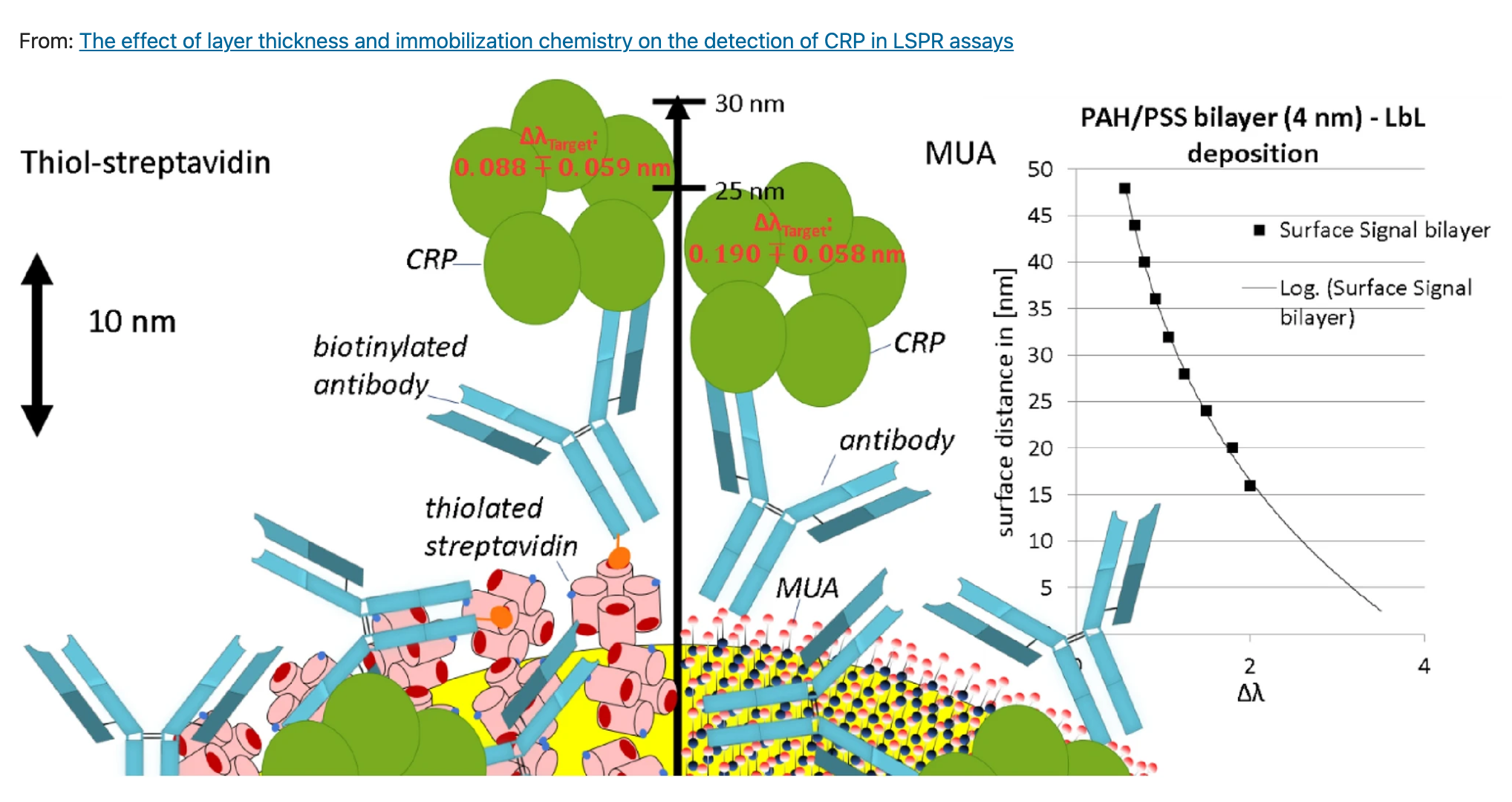- Home
- Research
- Nanobiophotonics
- Research results
- The Effect of Layer Thickness and Immobilization Chemistry on the Detection of CRP in LSPR Assays
The Effect of Layer Thickness and Immobilization Chemistry on the Detection of CRP in LSPR Assays

11.09.2023
In this work, the potential of localized surface plasmon resonance (LSPR)-based sensing was demonstrated with respect to the detection of a clinically relevant inflammatory biomarker, a C-reactive protein (CRP). For the measurements, the shift of the LSPR peak in the visible wavelength range is monitored (Δλ in nm) and plotted against the time in a sensorgram. First, the nanoparticle-based sensors were investigated for their sensitivity to changes in the refractive index in the surrounding medium (bulk). In addition, the decay length of the particle sensors was determined to better estimate the sensitive range. Since the sensitivity of the particles decreases with increasing distance to the surface, it was systematically investigated how different immobilization approaches for capture molecules for specific analyte detection affect the signal strength and thus the detection limits.
The system presented in this publication can be used for different samples and can also be regenerated. Even with the rapid and direct thiol-streptavidin assisted immobilization of the CRP capture molecule, a detection limit of 300 ng/ml could be achieved, which is in the lower clinically relevant range. Due to the high temporal resolution of the sensorgram, additional, binding kinetic information about the capture-analyte interaction can be determined. Thus, the LSPR system tested here offers great potential, both for clinical studies in the laboratory and point-of-care applications, as well as for more complex studies of affinity and dissociation of interacting molecules in research laboratories or pharmaceutical development.
